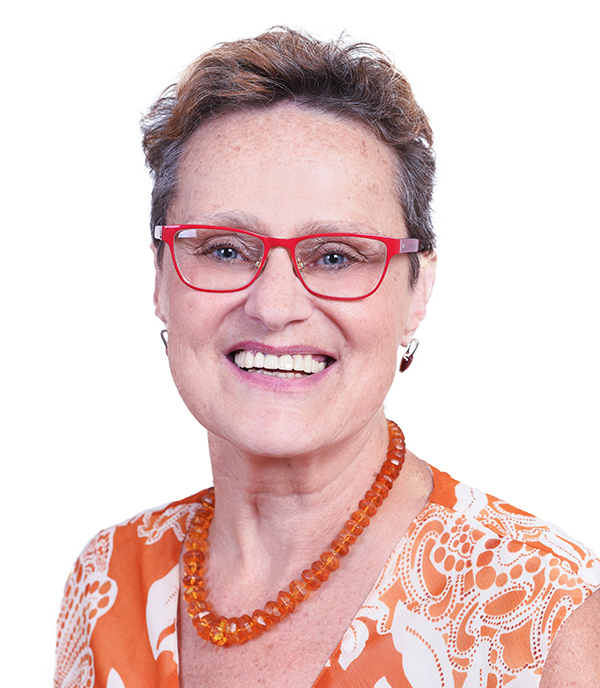Barbara McFarlin: A storied career
body copy

UIC Nursing professor emerita and three-time alumna Barbara McFarlin, PhD ’05, MS ’84, BSN ’74, CNM, RDMS, FACNM, FAAN, is the UIC College of Nursing’s 2024 Distinguished Alumni Award recipient. This is the 46th year the college has conferred this award.
Barbara McFarlin is a storyteller. A raconteur. “Feel free to stop me,” she says. “I can be a bit of a talker.”
But who would stop her when she has so many rich stories to tell? They include a childhood spent partly in Holland, a U.S. Navy tour during the tail end of the Vietnam War, being the first nurse-midwife in central Illinois, and her game-changing research on premature births.
“I have to say that every step of the way, UIC has given me the skills for the wonderful opportunities I’ve had in my career,” McFarlin says. “I’ve had a wonderful career.”
Her latest story may be her best yet. McFarlin, who served on the UIC Nursing faculty for 17 years and was head of what is now the Department of Human Development Nursing Science, recently published a paper that could be the key to accurately predicting preterm birth – something that has eluded doctors and scientists until now.
Transcontinental beginnings
McFarlin was born in Harvard, Illinois, but she spent almost 10 years of her childhood in the Netherlands when her father relocated the family there for work. That experience gave her a taste of life in Europe.
McFarlin’s family moved back to the U.S. – to Chicago – and she enrolled at UIC to study nursing. After graduation, she signed up to be a nurse in the U.S. Navy because she wanted to live in Europe again. She spent three-and-a-half years working at a U.S. Naval hospital in Naples, Italy in the mid-1970s.
There, she worked with doctors and midwives, who took care of pregnant women throughout the Mediterranean region. (“One time, one of the doctors and I did a breech delivery on the runway in Naples,” she recalls. “We had all kinds of adventures.”). These experiences inspired her to become a nurse-midwife.
“As a nurse-midwife, you provide the full span of women’s health care – contraception, prenatal care, gynecology, menopause – we take care of women from being teenagers to late in life,” she says.
After the Navy, she enrolled at UIC Nursing again, this time for her master’s to become a certified nurse-midwife.
Preventing premature births
Over the course of McFarlin’s 35 years as a nurse-midwife – working for practices in Champaign, Illinois, as well as Detroit and West Virginia — she delivered more than 4,000 babies. They weren’t all happy endings, though. Some women delivered prematurely, and their babies didn’t survive.
“As a midwife, I had the privilege of seeing them during their pregnancy and after.,” McFarlin says. “I saw the effect [of those losses] on them.”
She decided to return to UIC Nursing for a PhD to conduct research. At the time, there was no reliable indicator for preterm delivery other than previous premature pregnancies.
McFarlin, who is also a sonographer, felt certain that changes in cervical tissue during pregnancy held the key to early identification of risk. She collaborated with Bill O’Brien, a University of Illinois Urbana-Champaign professor who was head of U of I’s famed Bioacoustics Research Lab. O’Brien had developed qualitative ultrasound software that could be added to any ultrasound machine to investigate tissue structure. McFarlin became the first to use the software to study pregnancy in her 2005 dissertation research.
“You have to seek out people that have skills that you don’t have,” McFarlin says. “I’m interested in technology to solve problems that I can’t solve myself.”
The results of her more than 20-year collaboration with O’Brien culminated in a January 2024 paper published in the American Journal of Obstetrics & Gynecology Maternal Fetal Medicine, which established that their method of measuring microstructural changes in a woman’s cervix using quantitative ultrasound works as early as 23 weeks into pregnancy [see page X for more].
The next step, McFarlin says, is convincing ultrasound companies to include the technology on their machines. It hasn’t been an easy sell, but McFarlin is used to pushing through obstacles.
“When one of my grants was reviewed about 20 years ago, one of the reviewers said, ‘how does she think she can do this?’” she recalls. “I proved them wrong. I have a little competition in me, and now people are listening. I would like to carry it on.”